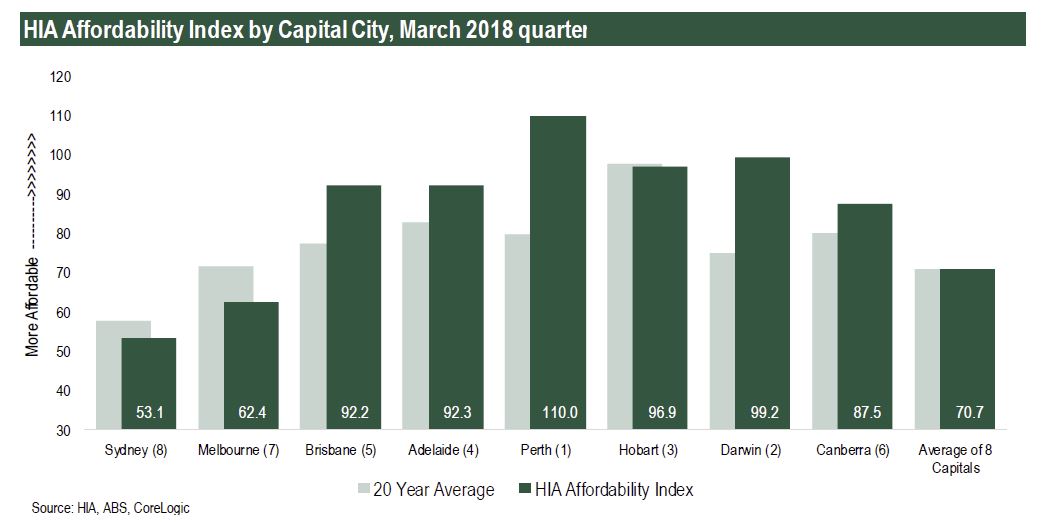“Affordability improved in most of Australia’s capital cities during the first three months of 2018 as house price pressures eased,” commented Shane Garrett, HIA Senior Economist.
 This does not necessarily take account of the now tighter, and becoming even tighter lending standards now in play. In any case, in most centres, affordability is still well below the long term averages.
This does not necessarily take account of the now tighter, and becoming even tighter lending standards now in play. In any case, in most centres, affordability is still well below the long term averages.
HIA’s Affordability Index is calculated for each of the eight capital cities and regional areas on a quarterly basis and takes into account latest dwelling prices, mortgage interest rates and wage developments. The results are published and analysed in the HIA Affordability Report.
“Affordability in Sydney improved by 1.9 per cent as a result of the reduction in dwelling prices over the past six months, while in Melbourne the outcome was largely unchanged as price growth remains solid.
“Across the eight capital cities overall, affordability improved slightly (+0.2 per cent) during the March 2018 quarter. The improvement was held back by strong home price growth in a limited number of markets including Melbourne and Hobart.”
“Current interest rate settings continue to benefit affordability. The RBA’s official cash rate is at a record low and hasn’t been moved in over 20 months – an unprecedented period of stability.
“Even though we have started to move in the right direction, housing affordability remains very challenging in the larger capital cities. The root cause of the problem is that the cost of producing new houses and apartments is still too high.
“Governments need to focus on solutions involving lower land costs, a more nimble planning system and a lighter taxation burden on new home building,” concluded Mr Garrett.
